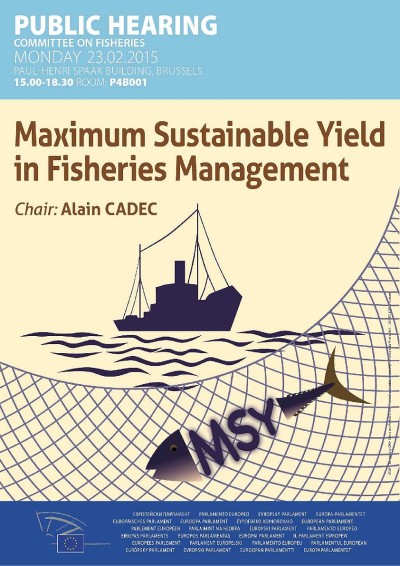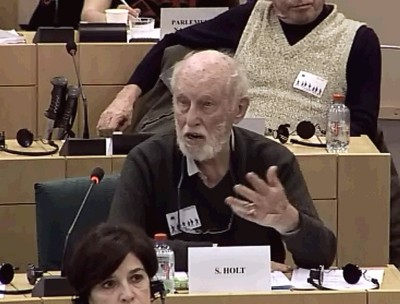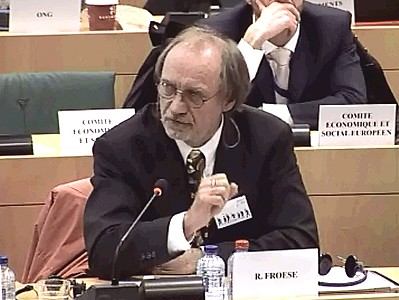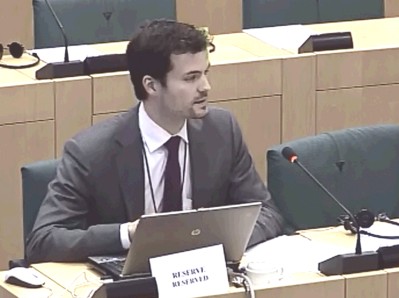 All is not well with European fisheries and fisheries resources. But there are some encouraging improvements in the status of some stocks. Is the reformed European Common Fisheries Policy delivering in practice?
All is not well with European fisheries and fisheries resources. But there are some encouraging improvements in the status of some stocks. Is the reformed European Common Fisheries Policy delivering in practice?
The key objective of the previous European Common Fisheries Policy (CFP) adopted in 2002 was to keep fish stocks in European waters just within safe biological limits. This has led to widerspread profitability problems and poor status of stocks.
The policy adopted in 2013 had for the first time the long-term objective of stock sizes above those needed to ensure maximum sustainable yield (MSY).
As part of the monitoring of the policy, the Fisheries Committee of the European Parliament held a public hearing under the title "Maximum Sustainable Yield in Fisheries Management". The hearing took place on 23 February 2015. It was organised in two panel sessions. The first served to clarify the concept and its meaning for management and the second was about sharing experience from applications in different national and regional contexts.
Sydney Holt and Rainer Froese were among the experts on panel one. Sydney Holt emphasised that most of the ideas and concepts on fisheries management had been around for some time. The reform two years ago made it clear that MSY was not a target, but a focal point. The Law of the Sea recognises MSY, but allows deviation from it for economic or social reasons. He emphasised the importance of restoring profitable fisheries. That required healthy stocks in the ocean. To manage the fisheries in such a way that they would not reach for the maximum would create stable conditions for fishing businesses, because they would not be strongly affected by natural variations as is the case now. This stable and profitable state is somewhere between maximum sustainable economic yield (MSEY) and maximum sustainable yield (MSY). This is achievable with much reduced fishing effort, thus enhancing profitability. Profit is defined simply as the difference between the market value of the catch and the cost of catching and landing it . The conceptual graph with illustrations is part of Sydney Holt's statement disseminated prior to the meeting. Click here to see it.
 Rainer Froese simplified key concepts in "quick and dirty" definitions:
Rainer Froese simplified key concepts in "quick and dirty" definitions:
- MSY is the maximum catch that a stock can support; taking more will shrink the stock and will shrink future catches
- Bmsy is the smallest biomass (stock size) that can support MSY
- F is the proportion of fish in the water (on average over the year) that are killed by the fishery
- Fmsy is the maximum F that is compatible with the MSY concept; Fmsy will lead to MSY and Bmsy, albeit very slowly
- Bmey is the biomass with maximum profit for the fishers
- Bpa is the biomass below which reproduction may be compromised
Empirical work shows that for most healthy stocks, the fishery could take out about 20% of the biomass in the water on a sustainable basis. Fishing stocks outside safe biological limits was the worst scenario to be avoided as it would mean huge foregone benefits in the future. Unfortunately that was still the case for some stocks, but 17 of 47 evaluated stocks were already in good shape.
How long would it take for a fish stock to recover? Broadly speaking between one and five years: small, short lived species of fish might recover within as little as one to two years, while big, long-lived species could take more than five years to recover.
 Fishing pressure should not be the same for all species in an ecosystem. Big, generally more valuable fish eat smaller fish. These prey fish in turn feed on yet smaller copepod zooplankton. Taking out the small foray fish, which are often of low economic value and fed to other animals as fishmeal and oil,reduces the necessary energy transport "between copepods and cod". That leaves less room for recovery of the big fish. So, fishing pressure should not be the same through the ecological pyramid.
Fishing pressure should not be the same for all species in an ecosystem. Big, generally more valuable fish eat smaller fish. These prey fish in turn feed on yet smaller copepod zooplankton. Taking out the small foray fish, which are often of low economic value and fed to other animals as fishmeal and oil,reduces the necessary energy transport "between copepods and cod". That leaves less room for recovery of the big fish. So, fishing pressure should not be the same through the ecological pyramid.
 The second panel featured Mr. Samuel D. Rauch III, Deputy Assistant Administrator for Regulatory Programs of the US National Oceanographic and Atmospheric Administration (NOAA) reporting the US experience in applying a slightly different concept of MSY on the 440 stocks that are actively managed. Commercially important stocks were closely monitored through expensive scientific data collection and analysis and could therefore be managed more confidently. Economically minor stocks did not justify that effort and were therefore managed more prudently to avoid getting close to thet upper limit of MSY, particularly in the light of natural variation. Fishers co-decide whether to prioritise social or economic objectives so long as the limit is not breached.
The second panel featured Mr. Samuel D. Rauch III, Deputy Assistant Administrator for Regulatory Programs of the US National Oceanographic and Atmospheric Administration (NOAA) reporting the US experience in applying a slightly different concept of MSY on the 440 stocks that are actively managed. Commercially important stocks were closely monitored through expensive scientific data collection and analysis and could therefore be managed more confidently. Economically minor stocks did not justify that effort and were therefore managed more prudently to avoid getting close to thet upper limit of MSY, particularly in the light of natural variation. Fishers co-decide whether to prioritise social or economic objectives so long as the limit is not breached.







